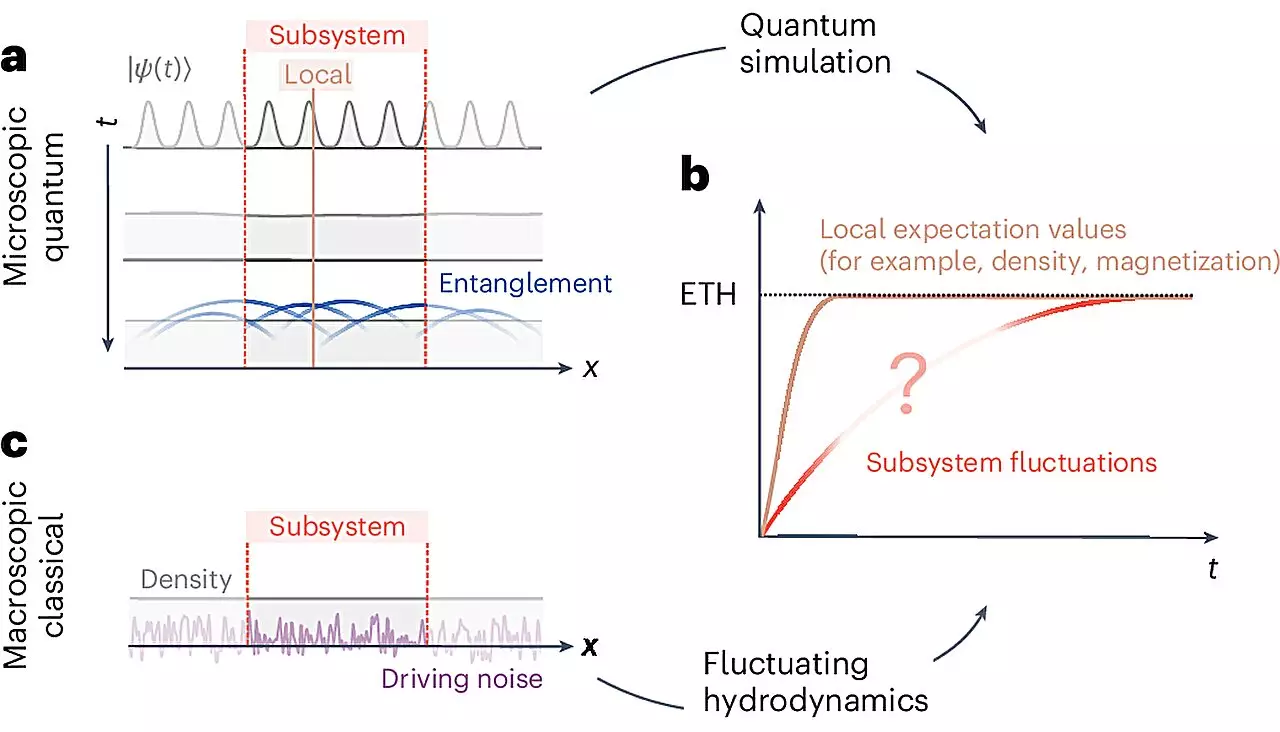The world of quantum physics is often viewed as highly complex and chaotic, with systems consisting of many interacting small particles posing significant challenges to traditional theories. However, a recent study led by Professor Monika Aidelsburger and Professor Immanuel Bloch from the LMU Faculty of Physics suggests that even chaotic quantum many-body systems can be described through simple diffusion equations with random noise. This groundbreaking research, published in the journal Nature Physics, sheds light on the potential for a macroscopic understanding of quantum phenomena.
The concept of hydrodynamics, which allows for the macroscopic description of flow behavior without delving into the physics of individual particles, forms the basis of this study. Julian Wienand, a doctoral candidate in Immanuel Bloch’s research team and lead author of the research, highlights the role of Brownian motion in understanding the behavior of small particles in water. By considering these erratic movements as white noise and applying fluctuating hydrodynamics (FHD) theory, the researchers were able to identify the diffusion constant as a key determinant of system behavior.
The research team’s findings suggest that under certain circumstances, chaotic quantum systems can be effectively described through FHD, simplifying the macroscopic understanding of these complex systems. By studying the behavior of chaotic many-body quantum systems using ultracold cesium atoms in optical lattices, the researchers were able to observe how fluctuations and density correlations evolve over time. The results indicated that FHD provides a qualitative and quantitative description of the system, offering valuable insights into the macroscopic behavior of chaotic quantum systems.
The implications of these findings extend to the field of quantum physics, where the laws governing quantum interactions are fundamentally different from those of classical particles. Concepts such as “uncertainty” and “entanglement” add layers of complexity to the behavior of quantum systems, making them notoriously difficult to calculate. However, the application of FHD theory to chaotic quantum systems presents an opportunity to simplify the understanding of these phenomena, potentially unlocking new insights into the behavior of quantum particles.
By demonstrating that chaotic quantum systems can be described macroscopically through FHD, the research team has opened new avenues for exploring the behavior of quantum particles. The ability to simplify the description of complex systems without the need to delve into microscopic interactions holds promise for future studies in quantum physics. By focusing on macroscopic diffusion processes, researchers may uncover new principles guiding the behavior of quantum systems, leading to advancements in our understanding of the quantum world.


Leave a Reply
You must be logged in to post a comment.